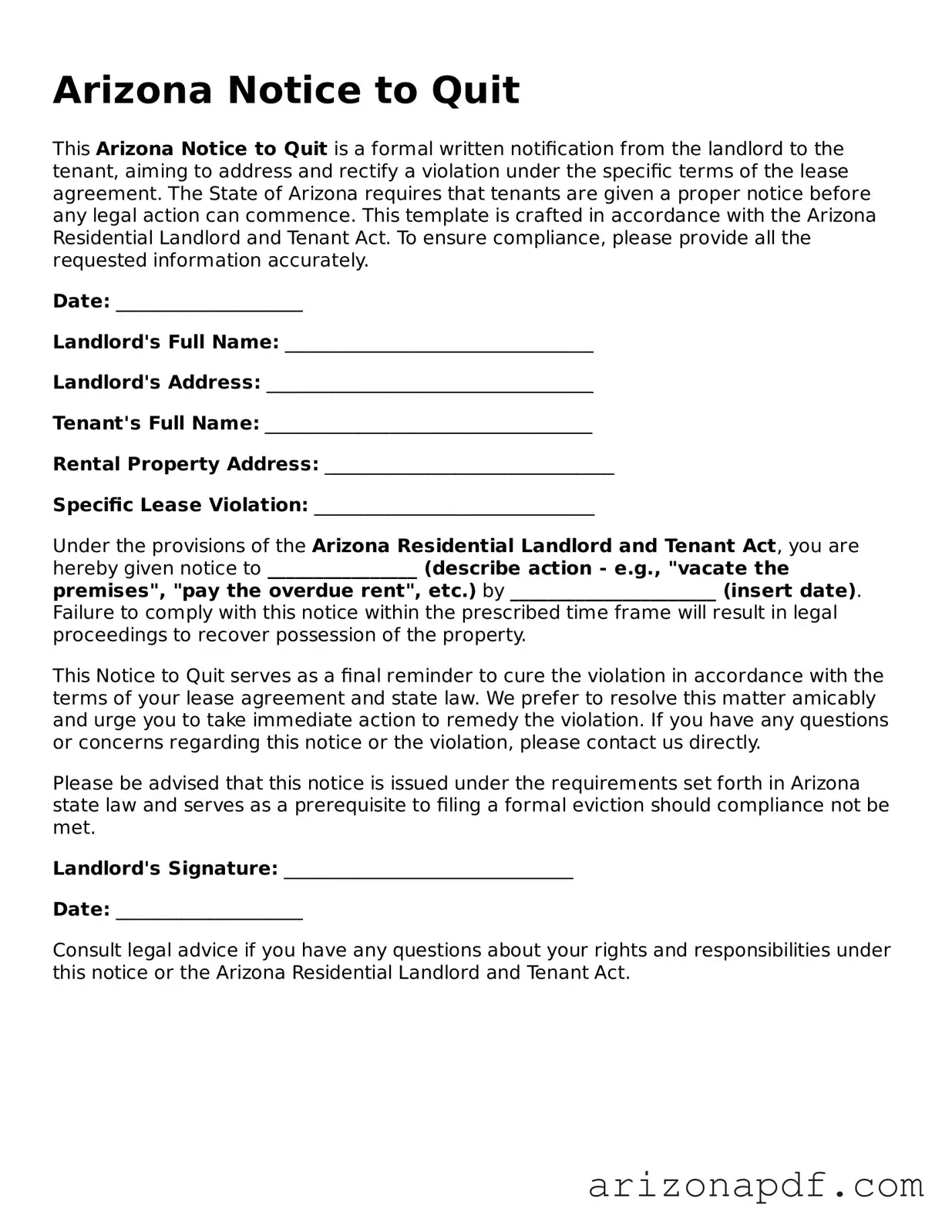Arizona Notice to Quit
This Arizona Notice to Quit is a formal written notification from the landlord to the tenant, aiming to address and rectify a violation under the specific terms of the lease agreement. The State of Arizona requires that tenants are given a proper notice before any legal action can commence. This template is crafted in accordance with the Arizona Residential Landlord and Tenant Act. To ensure compliance, please provide all the requested information accurately.
Date: ____________________
Landlord's Full Name: _________________________________
Landlord's Address: ___________________________________
Tenant's Full Name: ___________________________________
Rental Property Address: _______________________________
Specific Lease Violation: ______________________________
Under the provisions of the Arizona Residential Landlord and Tenant Act, you are hereby given notice to ________________ (describe action - e.g., "vacate the premises", "pay the overdue rent", etc.) by ______________________ (insert date). Failure to comply with this notice within the prescribed time frame will result in legal proceedings to recover possession of the property.
This Notice to Quit serves as a final reminder to cure the violation in accordance with the terms of your lease agreement and state law. We prefer to resolve this matter amicably and urge you to take immediate action to remedy the violation. If you have any questions or concerns regarding this notice or the violation, please contact us directly.
Please be advised that this notice is issued under the requirements set forth in Arizona state law and serves as a prerequisite to filing a formal eviction should compliance not be met.
Landlord's Signature: _______________________________
Date: ____________________
Consult legal advice if you have any questions about your rights and responsibilities under this notice or the Arizona Residential Landlord and Tenant Act.
